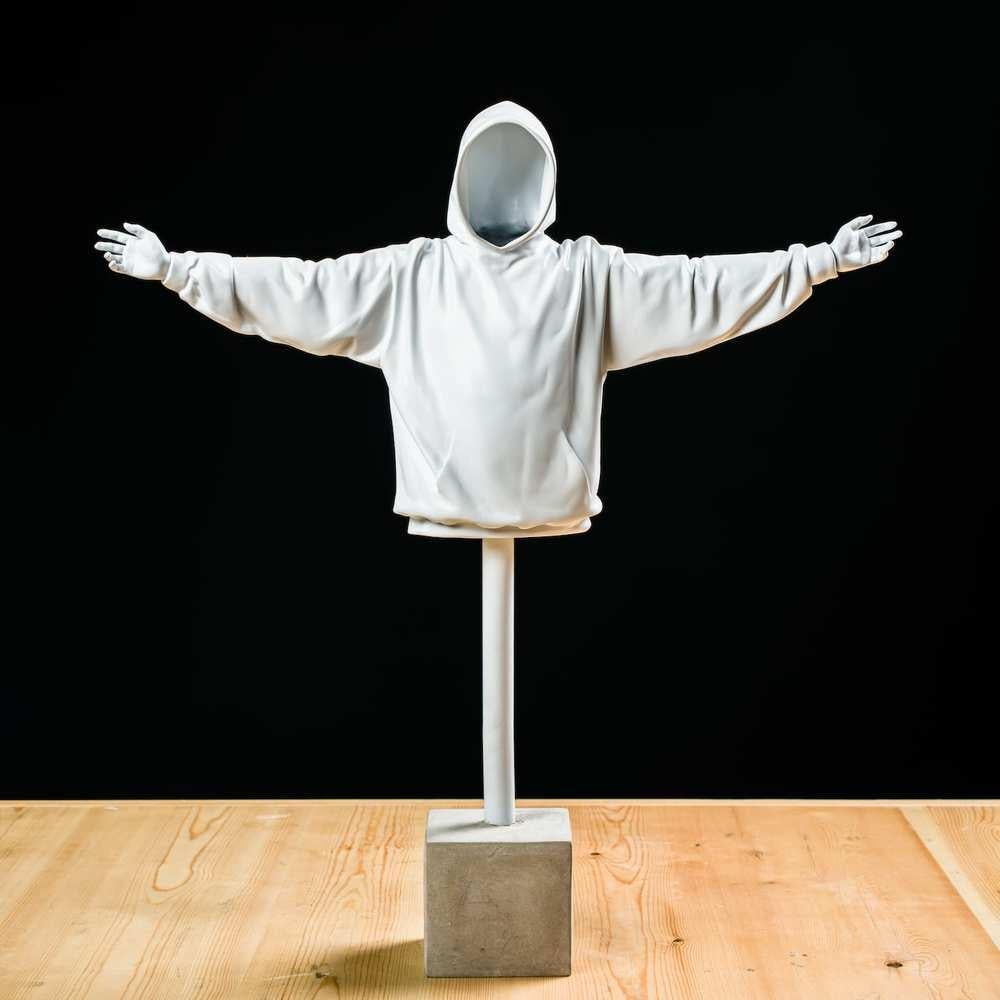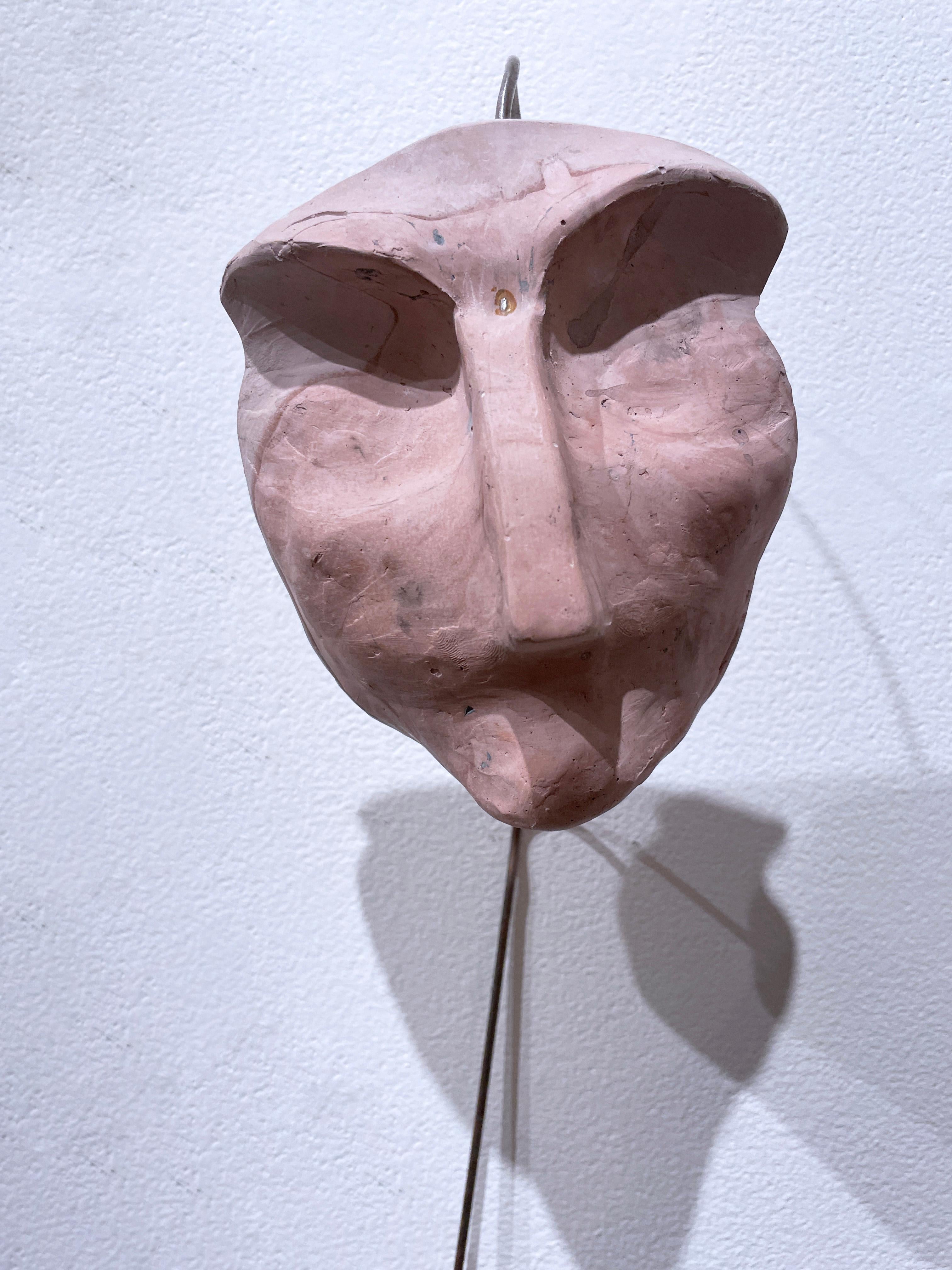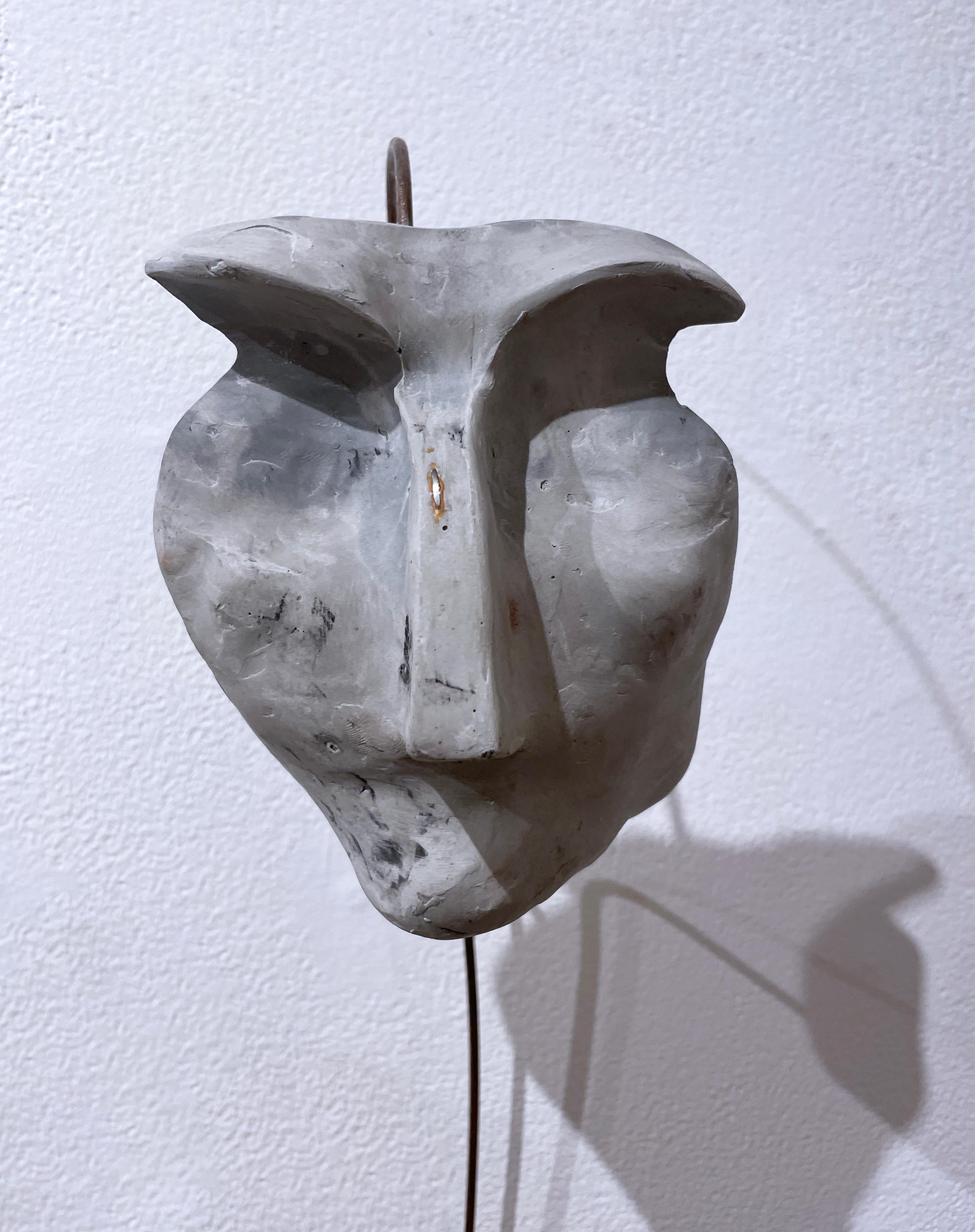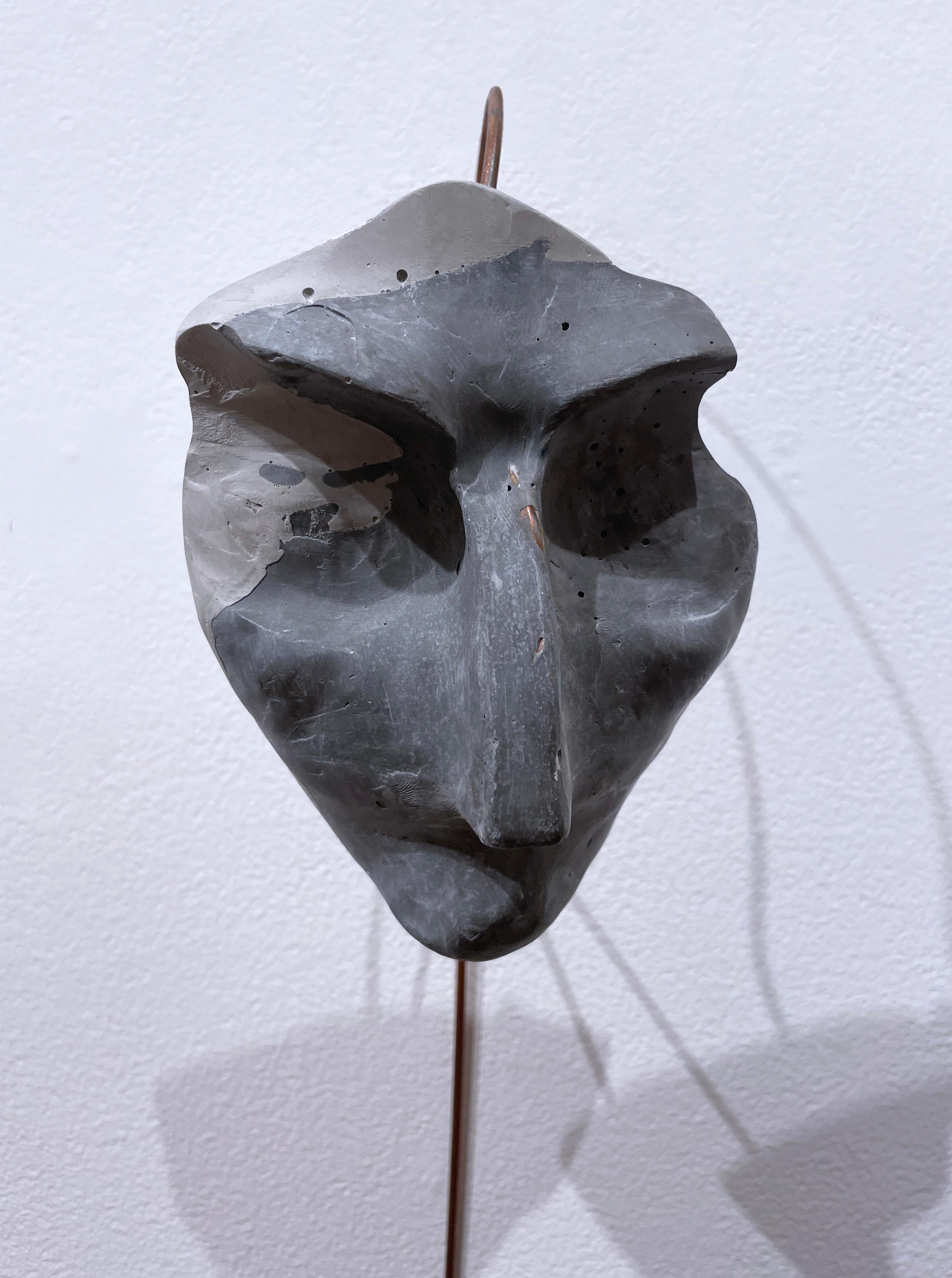Items Similar to Winged Male Figure - Apollo
Want more images or videos?
Request additional images or videos from the seller
1 of 3
Jason (Jessie) HerronWinged Male Figure - Apolloc. 1930s
c. 1930s
About the Item
This work is part of our exhibition America Coast to Coast: Artists of the 1930s
Winged Male Figure - Apollo, c. 1930s, polychrome bas-relief of cast aggregate, 12 x 26 inches; the mold from which this cast was taken by the artist is illustrated in St. Gaudens, Maurine, Emerging from the Shadows: A Survey of Women Artists Working in California, 1860-1960, Schiffer Publishing, Inc. (2015), p. 487; provenance includes Estate of Spencer Jon Helfen; presented in a newer wood frame
About the Bas-Reilef
Winged Male Figure is an extraordinarily rare bas-relief created around the time Jason Herron served as the Federal Art Project (FAP) sculpture supervisor for Los Angeles. Although Herron produced other bas-reliefs, such as Woman with Red Ball (Collection of Mitchell Wolfson, Jr., courtesy of the Wolfsonian - Florida International University), there are no other known examples of this work. In her encyclopedic Emerging from the Shadows: A Survey of Women Artists Working in California, 1860-1960, Maurine St. Gaudens describes the mold for this work, "Winged Male Figure - Apollo was originally executed as a mold from which a bas-relief would have been cast. This is the negative master form with the rebar supports evident verso. It is unknown whether a completed bas-relief was ever cast from the mold, but at some point, the artist treated the mold as an independent work adding polychrome to the surface." Like the original mold described by St. Gaudens, Herron painted the bas-relief to create a beautiful surface effect with subtle shadows and shimmering highlights. The underlying form is a sleek and stylized art deco image that fits elegantly with the prevailing 1930s Machine Age aesthetics of the type which adorned buildings across the country.
About the Artist
Jason Herron was one of the most prominent female sculptors living and working in California during the first half of the 20th century. Born in Denver, Colorado, her given name was Jessie Emerson Herron, but she assumed the name “Jason” early in her professional career. As an infant, Herron moved with her family to Los Angeles. She earned a bachelor’s degree from Stanford University and studied art at L’Academie Colarrossi in Paris, the Los Angeles Art Institute, the Otis Art Institute, and the University of Southern California. Herron was active in the Federal Art Project, a New Deal program which provided work to artists across the country. Herron served as Supervisor and Assistant Supervisor of Sculpture for the Federal Art Project in Los Angeles. Together with Henry Lion and Sherry Peticolas, Herron sculpted a work entitled The Power of Water in Lafayette Park in Los Angeles. She also sculpted two large works, Erda and Modern Youth, both of which were placed in Los Angeles Country Schools by the Project. Herron was well respected not only as an artist, but also as a savvy arts administrator. In 1941, she served as the Southern California Chairperson for National Art Week, an ambitious program with the dual purposes of promoting the sale of paintings, sculpture, drawings and prints for the benefit of artists who were still struggling under the weight of the Great Depression and providing the opportunity for average Americans to purchase artwork at a fraction of the customary prices by avoiding the traditional gallery system. Herron served on the board of governors of the Los Angeles County Art Institute and the Otis Art Institute. She was a member of the Los Angeles Art Association, California Art Club, Western Women Art Association, and the Southern California Artists. Herron exhibited nationally during the 1930s and 1940s, including at the Legion of Honor (San Francisco), the National Academy of Design (New York), the Los Angeles County Museum of Art and the Corcoran Gallery of Art (Washington DC). She won prizes at the Los Angeles County Fair (1934), the Pomona Fair (1934), the Ebell Club (Los Angeles 1935 and 1939), and the California Art Club (1946). She is listed in Who Was Who in American Art and other standard references.
- Creator:Jason (Jessie) Herron (1900 - 1984, American)
- Creation Year:c. 1930s
- Dimensions:Height: 12 in (30.48 cm)Width: 26 in (66.04 cm)Depth: 4 in (10.16 cm)
- Medium:
- Movement & Style:
- Period:
- Condition:
- Gallery Location:Los Angeles, CA
- Reference Number:1stDibs: LU1859213055242
About the Seller
No Reviews Yet
Vetted Seller
These experienced sellers undergo a comprehensive evaluation by our team of in-house experts.
1stDibs seller since 2022
6 sales on 1stDibs
Typical response time: 8 hours
- ShippingRetrieving quote...Ships From: Los Angeles, CA
- Return PolicyA return for this item may be initiated within 3 days of delivery.
More From This SellerView All
- Music (attributed)By Philip Kran PavalLocated in Los Angeles, CAThis sculpture is part of our exhibition America Coast to Coast: Artists of the 1930s Music (attributed), brass and wire construction, c. 1936, 28 x 14 x 5 inches; perhaps exhibited at Hollywood Riviera Gallery, 1936 (third prize); provenance includes Estate of Jon Spencer Helfen (Los Angeles, CA About the Sculpture In 1935, Philip Paval bought a box of metal in a “blind auction.” Paval, a painter, sculptor, and jeweler, had hoped the box contained silver. To his dismay, it was brass. Seeing an opportunity, Paval started to make sculptures from the brass sheets. His subjects included Cinema, Hollywood, Radio, Dance, Aviation and Music. The works were well-received with the Hollywood crowd and critically acclaimed. Actor and comedian, Ben Bard, purchased four of them for his theater, and novelist and screenwriter, Vicki Baum ordered four more for her drawing room. Movie director King Vidor also purchased them. Los Angeles Times art critic, Arthur Millier, described Paval’s “contraptions” as “ingenious, decorative, different.” Paval exhibited these works for several years in the late 1930s, including at the American Artists’ Congress Gallery in Los Angeles in an exhibition called Formalism and Abstraction in 1938 and at a solo show at Stendahl Galleries in 1939. The appeal of these works must have been irresistible, as a 1936 Los Angeles Times article noted, “Two feet of brass art has been stolen from the Hollywood Riviera Galleries. The work is an abstraction. It portrays the spirit of music and rested on the grand piano in the main hall. The work of Philip Paval, it won third prize in the current gallery exhibition at the gallery.” One can only wonder whether this is the “contraption” which was pilfered from the gallery nearly one hundred years ago. Given the description of the work, its subject matter and size, it seems likely. About the Artist Philip Paval was a sculptor, painter, and jeweler. Born in Denmark, Paval was apprenticed to a silversmith and studied art in Denmark. He immigrated to the US in 1919 and first worked as a merchant seaman in New York. The following year, Paval settled in Los Angeles where he later opened his own jewelry shop featuring works he designed and produced. Paval became a favorite in the entertainment world, making a good living selling silver...Category
1930s Art Deco Figurative Sculptures
MaterialsBrass
- KossackLocated in Los Angeles, CAThis sculpture is part of our exhibition America Coast to Coast: Artists of the 1930s Kossack, c. late 1930s, polychromed cedar and walnut relief sculpture, carved signature under the base of the figure, 15 x 8 x 3 1/2 inches (figure), 10 x 19 inches (board), exhibited at Zeidler's solo exhibition at the San Francisco Museum of Art, November - December, 1942 (label verso), label verso reads "Kossack / cedar & walnut / Avis Zeidler" About the Sculpture Kossack is typical of Aviz Zeidler’s direct carved wood sculptures of the 1930s. The subject looks directly at the viewer, unfeeling behind a polychromed stare. Seemingly influenced by two of her major teachers, California’s Ralph Stackpole and New York’s William Zorach, Zeidler drew on primitive traditions to create what one critic described as her “gruesome wood sculptures.” Rigid, solid, and unmoving are other words that characterize Zeidler’s statues which often seem to have the deeply rooted ancient power of a totem. Zeidler’s “grimacing artificiality does, indeed, manage to hold a sense of force,” is how The San Francisco Examiner art critic put it in 1938 when describing the artist’s award-winning entry at the San Francisco Art Museum. The same words could have applied to Kossack when it was exhibited at the museum four years later. Perhaps the artist was trying to contain the power of the fearsome Kossacks, the enemy of so many Eastern European peasants, by freezing the image in wood. About the Artist Avis Zeidler (Nemkoff) was a California-based artist who is principally known for her sculpture and drawings. She was born in Madison, Wisconsin, but moved to Northern California by the late 1920s where she majored in art at Berkely and studied with Lucien Labaudt, Ray Boynton...Category
1940s American Modern Figurative Sculptures
MaterialsWood
- Untitled (Hulda Goeller)Located in Los Angeles, CAThis sculpture is part of our exhibition Charles Goeller: A Wistful Loneliness. Carved and painted wood and gesso, 23 x 15 3/4 x 3 inches, Signed verso "Carved by Charles L. Goeller...Category
1930s American Modern Figurative Sculptures
MaterialsGesso, Wood
- Two FiguresBy Robert Chester ThomasLocated in Los Angeles, CAThis sculpture is part of our exhibition America Coast to Coast: Artists of the 1940s. Two Figures, 1949, ebony wood, 24 x 7 x 5 inches, unsigned, but comes from Thomas' daughters ...Category
1940s American Modern Sculptures
MaterialsWood, Ebony
- Plate with Ram (Untitled)By Henry Varnum PoorLocated in Los Angeles, CA(Note: This work is part of our exhibition Connected by Creativity: WPA Era Works from the Collection of Leata and Edward Beatty Rowan) Glazed and incised ceramic, 8 ½ inches diamet...Category
1920s American Modern More Art
MaterialsCeramic
- Ponte Neuf (The Old Bridge)Located in Los Angeles, CA(Note: This work is part of our exhibition Connected by Creativity: WPA Era Works from the Collection of Leata and Edward Beatty Rowan) Oil on panel, 14 ½ x 18 inches unframed, 22 x 25 ½ inches framed, inscribed “painted by David McCosh Property of Edward b. Rowan” and numbered “8” verso Exhibited: The First Exhibit of the Iowa Artist...Category
1920s American Modern Landscape Paintings
MaterialsOil
You May Also Like
- PAX (BETWEEN TIMES) - Geometric Sculpture Vintage Salvaged Building MaterialsLocated in Signal Mountain, TNBrian Russell Jobe (American, b. 1981) is an artist and non-profit director based in Knoxville, Tennessee. Jobe's studio practice is focused on sculptur...Category
2010s Contemporary Figurative Sculptures
MaterialsConcrete, Marble
- "00:03" Resin Sculpture 73" x 71" x 27.5" inch Edition 2/8 by Huang YulongBy Huang YulongLocated in Culver City, CA"00:03" Resin Sculpture 73" x 71" x 27.5" inch Edition 2/8 by Huang Yulong ABOUT THE ARTIST Huang Yulong was born in 1983 in Anhui Province, China. In 2007 he graduated with a Bache...Category
21st Century and Contemporary Contemporary Figurative Sculptures
MaterialsConcrete
- Dusty Rose Sage (2022), terracotta concrete abstract face sculpture, metal wireBy Dena Paige FischerLocated in Jersey City, NJDusty Rose Sage (2022), terracotta concrete abstract face sculpture, metal wire Biomorphic and earthy yet industrial style wall sculpture, she...Category
2010s Contemporary Abstract Sculptures
MaterialsConcrete, Wire
- Speckled Sage (2022), gray concrete abstract face sculpture, metal wire, earthyBy Dena Paige FischerLocated in Jersey City, NJSpeckled Sage (2022), gray concrete abstract face sculpture, metal wire, earthy Biomorphic and earthy yet industrial style wall sculpture, she...Category
2010s Contemporary Abstract Sculptures
MaterialsConcrete, Wire
- Marbled Sage (2022), gray concrete abstract face sculpture, metal wire, earthyBy Dena Paige FischerLocated in Jersey City, NJMarbled Sage (2022), gray concrete abstract face sculpture, metal wire, earthy Biomorphic and earthy yet industrial style wall sculpture, shel...Category
2010s Contemporary Abstract Sculptures
MaterialsConcrete, Wire
- Whitewashed Sage (2022), gray white concrete face sculpture, metal wire, earthyBy Dena Paige FischerLocated in Jersey City, NJWhitewashed Sage (2022), gray and white concrete abstract face sculpture, metal wire, earthy Biomorphic and earthy yet industrial style wall sculpture, shelf sculpture or tabletop s...Category
2010s Contemporary Abstract Sculptures
MaterialsConcrete, Wire




